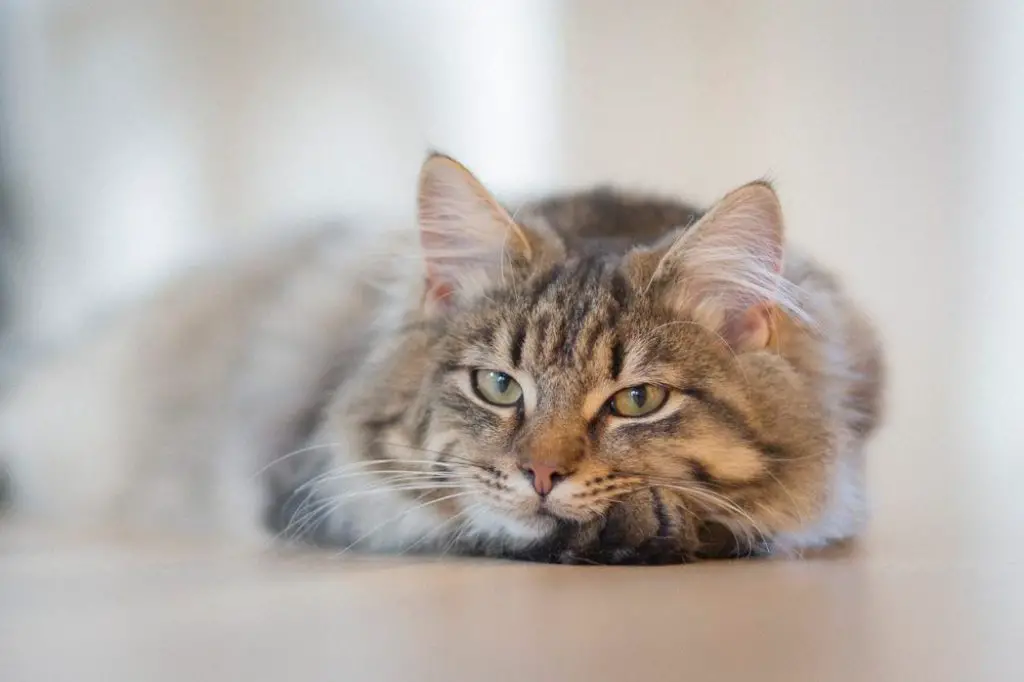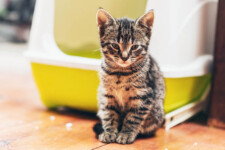Dehydration in Cats (Symptoms, Risk Factors, & Treatment)
A cat can suffer from dehydration for a very long time without anyone realizing, and this can be very excruciating for a cat.
It important to keep track of your cats health to determine is they have a hidden health condition.
Dehydration in cats can be caused by a number of reasons including their diet, diarrhea, lack or inadequate clean drinking water. Long term dehydration could lead to health problems like kidney failure.

Causes of Dehydration
The following are the main factors that could increase the chances of your cat suffering from dehydration.
Dried food
Cats are not naturally drawn to drinking water, so they depend on their diet to get the water their bodies require.
Cats that consume an all dry food diet are at a higher risk of getting dehydrated compared to those on a wet diet.
A cat requires at least 200 ml of water every day, and dry cat food is short by 160ml.
Switching to wet cat food can help attain this important target.
Find out how to entice your cat to drink more water in this article
Medical Conditions
There are a number of conditions that can contribute to dehydration in cats.
Urinary tract obstruction, heatstroke, drooling, fever, shock and increased urination are some of conditions that increase dehydration.
Diabetic cats or those suffering from renal failure experience excessive urination which results in loss of fluids.
Learn about the causes and treatment of increased urination in cats
Diarrhea And Vomiting
Plenty of fluids are lost when cats vomit or suffer from diarrhea, and if this happens for more than a day you can be sure that they will end up dehydrated.
As vomiting and diarrhea continues, it will be impossible for cats to replace the lost fluids by drinking water. Therefore, special fluids from the vet are required.
Find out the causes of cat diarrhea and how to treat it in this article
Symptoms of Dehydration in Cats
The symptoms of dehydration might not manifest themselves well during the early stages of dehydration but as the severity increases, you will be able to see these symptoms.
If you suspect that your cat is dehydrated, you can perform the skin turgor test to confirm or refute your suspicions.
To perform this test, gently pull up the cat’s skin above the shoulders, release it and watch how fast the skin springs back to normal.
A well-hydrated skin will regain its initial form in less than a second. If it takes longer, you can be sure that your cat is dehydrated.
Aside from the skin turgor test, here are some of the symptoms that a dehydrated cat will exhibit:
- Constipation.
- Increased heart rate.
- Dry mouth.
- Lethargy.
- Sunken eyes.
- The state of the gums – a dehydrated cat will have sticky gums rather than that moist and slippery.
- Flaky skin.
- Hard stool.
- Polyuria (frequent urination).
- Panting.
- Loss of appetite.
Dehydration in Cats Treatment
Replacing fluids and electrolytes, determining and treating the underlying causes are the necessary steps taken to treat dehydration.
This process can only be performed by a certified vet.
Depending on the severity of dehydration, administering only water may not be sufficient, the electrolyte balance in the body will also need to be restored.
The vet will need to perform a number of tests to determine the underlying cause and find the best solution for it.
They may also need to administer intravenous and subcutaneous fluids.
In cases where vomiting and dehydration are the causes of dehydration, the cat will be medicated to treat the problem.
More Related Reading
- Best Cat Food For Constipation
- Fix Your Cats Digestive Problems With These Foods
- Why Is My Cat Vomiting? (How To Solve It)
- Is Your Cat Breathing Heavily? (Here’s What To Do)
Sources
https://vetgirlontherun.com/evaluating-dehydration-based-skin-turgor-cat-vetgirl-veterinary-ce-blog/



